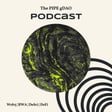
AI and Solar Energy Teaming Up for a Sustainable Tomorrow : PIPE gDAO ep 18
Dive into the latest episode of the PIPE gDAO Podcast for impact finance, recorded at 10:03 AM BST on Sunday, April 6th, 2025. Discover how AI is revolutionizing solar power, making it smarter, more efficient, and the cornerstone of a sustainable future. From optimizing energy grids to unlocking next-gen solar tech, the future of clean energy is here."
@ThePIPEgDAO | Instagram, Facebook | Linktree
This podcast is for informational and educational purposes only and does not constitute financial, legal, or investment advice. Views expressed are those of the hosts and guests and may not reflect those of the PIPE gDAO or its affiliates.
Investing in blockchain, DAOs, and tokenized university research involves significant risk. Do your own research and consult qualified professionals before making investment decisions.
PIPE gDAO makes no guarantees about the accuracy or completeness of information presented and is not liable for any losses arising from its use. This is not an offer or solicitation to buy or sell any financial product.
Hosts and guests may have financial interests in the projects discussed.


